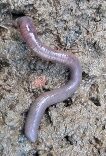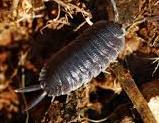CONTENTS– 1. Introduction about garbage
2. Landfill
3. Biodegradable and non-biodegradable wastes
4. Green house gases due to burning
5. Vermicomposting and red worms
6. Recycling of papers
7. Plastics: Boon or curse
Garbage- Those discarded things which are thrown away and are no longer useful are called garbage. The garbage is commonly called as waste.
e.g.- Newspaper, Vegetable wastes, used tea leaves, Polyethene, used notebooks, old clothes, Sewage, Peels, Metal scraps, crop residues, acids, smoke, slag, ash, bottles, syringe, cotton, broken glass, broken toys, dried leaves, used water etc
Types of wastes- There are two types of wastes-
Biodegradable wastes- Those wastes which are decomposed by microorganisms like bacteria, fungi, red worms etc. are called biodegradable wastes.
e.g.- Newspaper, Vegetable wastes, used tea leaves, used notebooks, old clothes, Sewage, Peels, crop residues, cotton, dried leaves, food wastes etc
(b) Non-biodegradable wastes- Those wastes which are cannot be decomposed by bacteria, fungi, earthworms etc are called non-biodegradable wastes. Non-biodegradable wastes are comparatively more harmful than biodegradable wastes.
e. g.-Polyethene, Metal scraps, acids, smoke, slag, ash, bottles, syringe, broken glass, broken plastic and metal toys, etc.
Landfill- The garbage is generated by houses, industries, factories, crop fields, offices, shopping malls etc. Solid wastes are thrown in dustbins and carried away to remote place by garbage collecting vehicles of municipal bodies.
They carry the garbage to a place for its natural decomposition by decomposers. Sometimes non-biodegradable and metal scraps are also found in it. This filling of garbage is called landfill. Usually landfill is done to low laying area.
When landfill is done to any place and no longer garbage is deposited there then soil is coved above the garbage.
Now, the gardens are developed over there.

Decomposers-The dead plant parts and animals are naturally decomposed by decomposers. e .g.- Bacteria and fungi. They decompose them and their nutrients are returned back to the nature. So, decomposers have very important role in recycling of dead organic things. As a result of decomposition dark coloured manures are formed.
Manures- The dark coloured decomposed organic material is called manures. It is formed by decomposition of dead plants and animals. Manures are formed by decomposers like bacteria and fungi. It is an organic fertilizer.
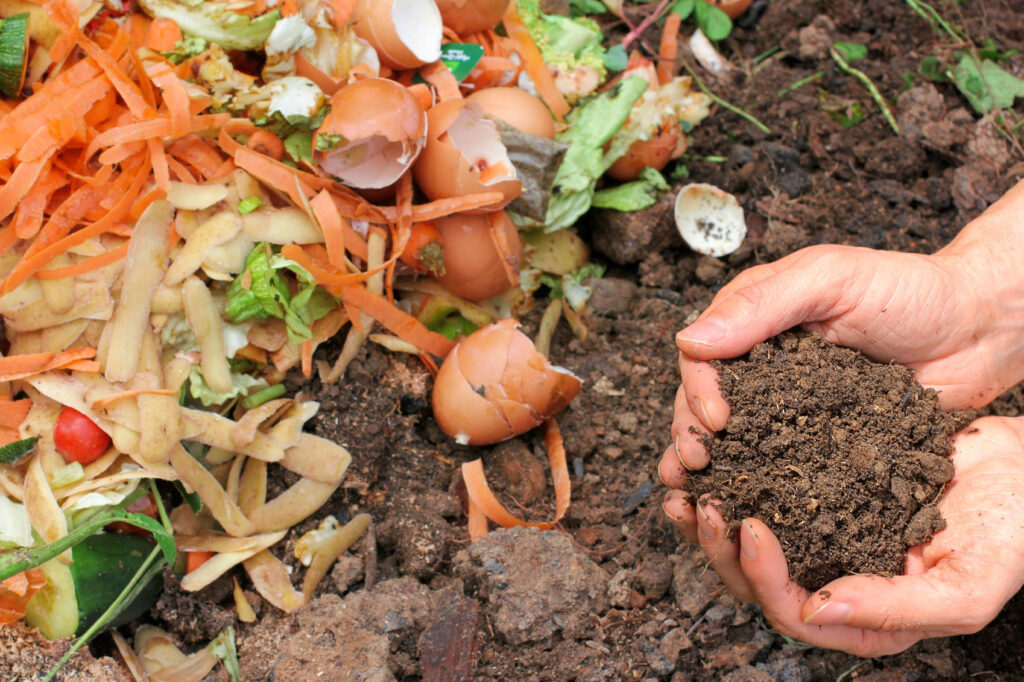
Compost-Compost is made by decomposing organic materials into simpler organic and inorganic compounds by the microorganisms and earthworm (red worm). The process of making compost is called composting. Compost can be selled in the market. They are cheaper and safe for environment in comparison to the chemical fertilizers.
Vermicompost– The process of making compost by using earthworms is called vermicomposting. The earth worms are also called as red worms. The process of making vermicompost is called vermicomposting. It makes soil porous, improves soil quality, water holding capacity and improves aeration.
Recycling and reuse of Materials– Many diseases are caused due to inadequate and insufficient garbage disposal. The problem of garbage can be shorted out to many extent by following 3 Rs- Reduce, Reuse and Recycle.
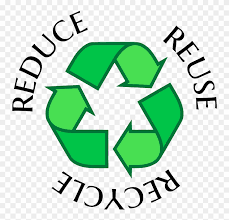
The waste papers can be recycled easily. The use of one ton of paper can save about 15-18 trees. Recycling of paper saves water, and reduces the use of chemicals like chlorine and less air pollution is caused. Papier-mâché is an art form of Jammu and Kashmir in which waste paper is used to make decorative artifacts.
Plastic: Boon or Curse–Plastic is a petrochemical product. It is prepared from fossil fuel. It is used widely in different spheres of life. A number of products are made from plastic. e. g.- Pencil box, bucket, tooth brush, raincoat, ropes, shoes, parts of vehicles, laptops, chairs, toys etc. They are very useful in one way or other. The unused plastic is often thrown here and there. They are non-biodegradable materials. They do not decompose easily.
Plastic as a boon- Plastic products are cost effective. They can be easily moulded into different shapes. They are durable and have no effect of chemicals like acid, base and salts. Various plastic products are prepared from plastics. So, it can be said as plastic is like a boon.
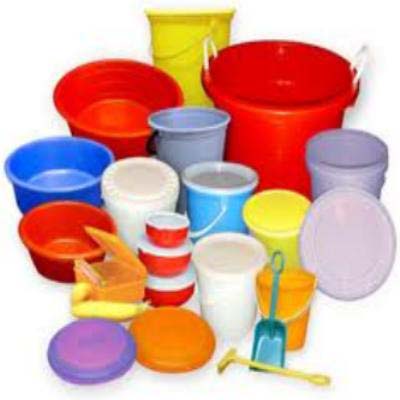
Plastic as a curse- The food gets spoiled when kept in plastic. The dyes used in plastic gets mixed with warm food. Burning of plastic releases harmful greenhouse gases like carbon dioxide gas, oxides of nitrogen like gases. On burning plastic produces harmful suspended particulate matters (S.P.M.), ash and dust. The garbage thrown in drains chokes them and cause further problems to water bodies. The food wastes thrown in polythene bags are sometimes eaten by stray animals, leading to their death.
Steps to minimize plastic– Use jute or cloth bags instead of polythene bags. Do not throw the waste food items on plastic bags. Do not burn the plastics. Try to reuse many a time or let it recycle by selling plastic items no longer in use. Awareness programmes about minimum use of plastic should be organized and particularly their throwing here and there should be stopped. Many government and non-government agencies are working in this regard to dispose plastic and other kind of waste towards ensuring a clean, green and healthy environment. Non-governmental organizations (N .G.O.) like Green peace and schemes like ‘Bhagidari’ at Delhi are working good in this direction.
EXERCISE QUESTIONS-
Q.1
(a) Which kind of garbage is not converted into compost by the red worms?
(b) Have you seen any other organism beside red worms, in your pit? If yes, try to find out their names. Draw pictures of these.
Ans-
(a) Non-biodegradable wastes like broken glass, metal scraps, iron nails, plastic products, polythene bags etc. are not converted into compost by red worms.
(b) Beside red worms, there are a few spiders, small bugs; beetle, flies and ants were present in digged out pit.
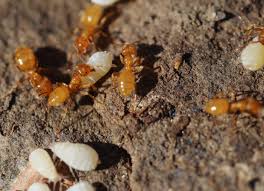
Q.2 Discuss
(a) Is garbage disposal the responsibility only of the government?
(b) Is it possible to reduce the problem relating to disposal of garbage?
Ans-
(a) No, the garbage disposal is the responsibility of citizens also. Citizens should also keep their surrounding clean. Government is not able to reach every part of any place.
(b) Yes, it possible to reduce the problem relating to disposal of garbage by adopting rule of 3Rs.
(i) Reduce- The reduction in the amount of waste generation can be reduced at houses, studies and works.
(ii) Reuse- It is finding of alternative ways to use the waste instead of throwing.
(iii) Recycle- It is the conversion of waste and unuseful things into useful and marketable things.
Q.3
(a) What do you do with the leftover food at home?
(b) If you and your friends are given the choice of eating in a plastic plate or a banana leaf platter at a party, which one would you prefer and why?
Ans-
(a) The leftover food can be given within the given time to the shelter homes or rag pickers within due time. It can be eaten again if preserved in refrigerator or other suitable method. If it’s not possible then they can be put into biodegradable waste disposal pit to decompose into compost.
(b) The dyes present in the plastic may leave behind to get mixed with the hot food. Eating of such dye mixed food will harm the health. So, we should prefer to eat in banana leaf platter because it is biodegradable and disposed off easily in nature.
Q.4
(a) Collect pieces of different kinds of paper. Find out which of these can be recycled.
(b) With the help of a lens look at the pieces of paper you collected for the above question. Do you see any difference in the material of recycled paper and a new sheet of paper?
Ans-
(a) Different kinds of waste papers were collected. e. g.-Newspaper, notebook, envelops, magazines, boxes etc. They all are biodegradable and can be recycled easily.
(b) The new piece of paper is thin, even and smooth but the recycled paper is comparatively thick, porous, uneven and comparatively rough. The tensile strength of the new paper is more than the recycled paper.
Q.5
(a) Collect different kinds of packaging materials. What was the purpose for which each one was used? Discuss in group.
(b) Give an example in which packaging could have been reduced.
(c) Write in short on how packaging increases the amount of garbage.
Ans-
(a) Following packaging material were collected –
– Plastic (polythene) bags- for carrying the sugar from grocery shop
– Air pillow and air bubble wrap -for protection of electric and electronic items
-Tin cane- for preservation of Paneer
-Wooden box- for transportation of machine parts
-Glass- for storage of fruit Jam
-Cardboard /corrugated cardboard packets- for transportation of fruits, eggs, biscuits etc.
-Brick carton- for packaging of milk, Juice, Lassi etc.
(b) Jute bags and bags made from used cloths are good alternative of plastic packets used for packaging. Purchasing of local food items, edible oils from mill, fruits and milk can be made in such bags or in containers. So, there is no need of packaging can be reduced.
(c) We buy so many things that remain packed in different packing materials. These packaging materials increase the garbage on un-packaging.
Q.6 Do you think it is better to use compost instead of chemical fertilizers? Why?
Ans-Chemical fertilizers like urea, ammonium sulphates etc. are prepared in factories. They are rich in nutrients but are costly and harm the soil quality if used in excess. Compost is a decomposed organic matter. It is porous, improves soil quality, water holding capacity and aeration. So, compost is preferred over chemical fertilizers.
© www.vkscience.com
